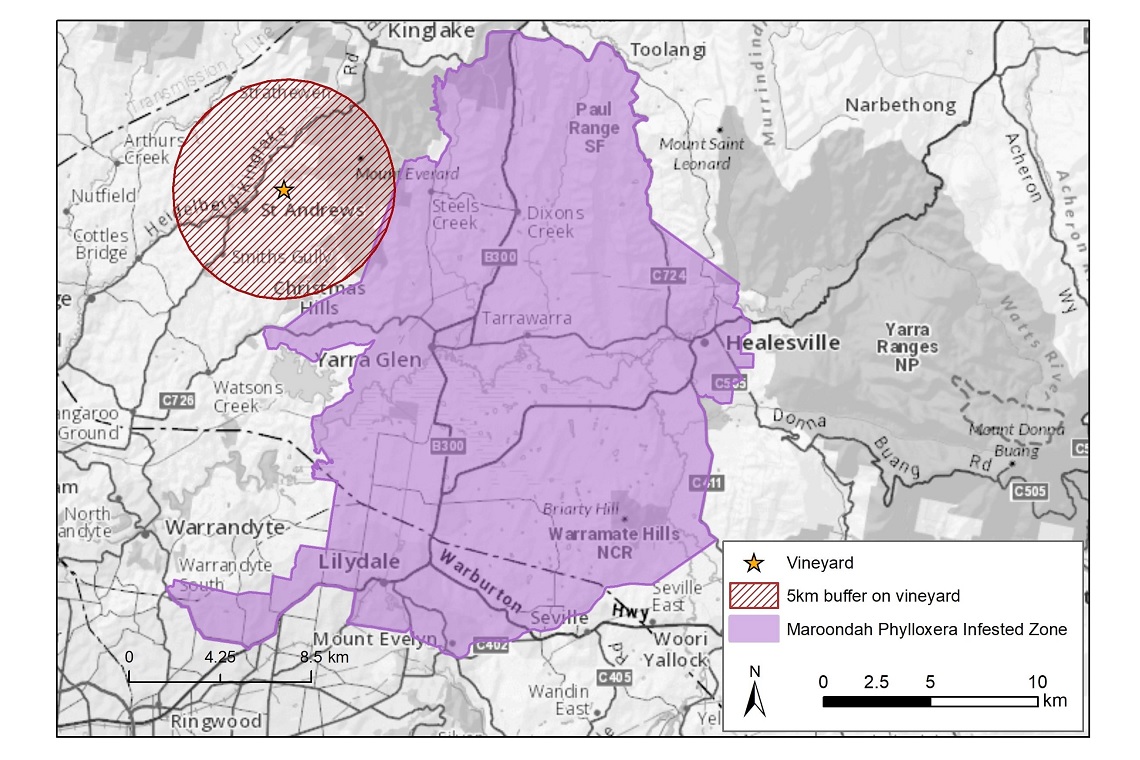Vinehealth Australia and Australian Grape and Wine Inc have advised of a new phylloxera detection in a commercial vineyard located at St Andrews in a Phylloxera Risk Zone in the Yarra Valley.
The strain of phylloxera detected has been confirmed as G1; the same as that found in the Maroondah Phylloxera Infested Zone (PIZ) also located in the Yarra Valley.
“This latest phylloxera outbreak in Victoria is a concerning development,” said Vinehealth Australia CEO Inca Pearce. “It highlights the critical role that industry must play in preventing further spread.
“The outbreak is also clear evidence of the need for a new national management strategy for phylloxera, on which work has recently commenced. We need to do everything in our power to protect our vines and manage the risk.”
A five kilometre quarantine area has been introduced around the infested vineyard (see map above) and that abuts the north west boundary of the existing Maroondah PIZ. Agriculture Victoria is currently working on the establishment of a PIZ in accordance with the National Phylloxera Management Protocol.
Australian Grape & Wine Chief Eexecutive, Tony Battaglene said: “Pests and diseases are a major risk to the Australian wine sector. Managing this risk should remain a high priority for all grape and wine producers and Australian Grape & Wine is committed to raising biosecurity awareness across the sector.”
Anyone moving grapes and grape-related material, grapevine planting material, machinery, equipment, diagnostic samples or vineyard soil out of the quarantine area is reminded that they must comply with movement conditions stated in Agriculture Victoria’s Industry Notice.
Agriculture Victoria and Wine Yarra Valley are working together to assess and manage the impact of the detection and implications for the existing Maroondah PIZ boundary.
Vinehealth Australia and Australian Grape & Wine will continue to monitor the situation and work together to communicate information to industry regarding this detection and to ensure that insights gained can be used to prevent the further spread of phylloxera.

